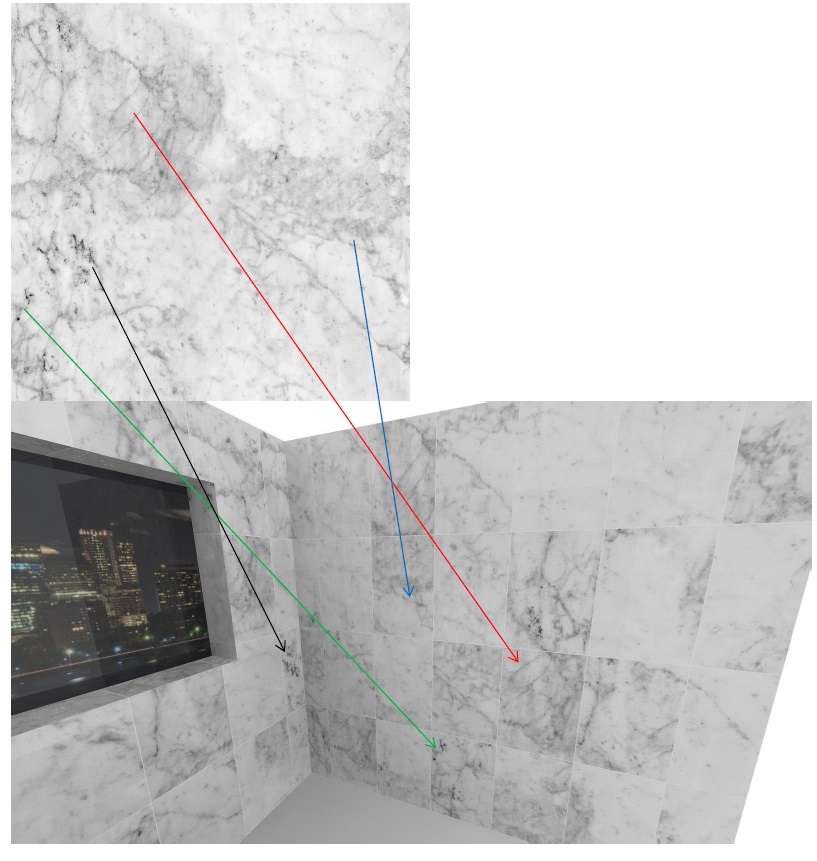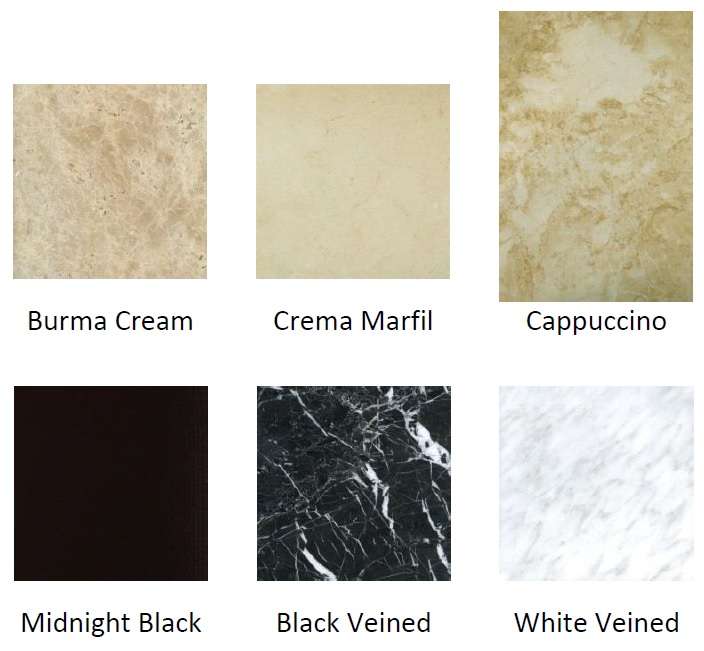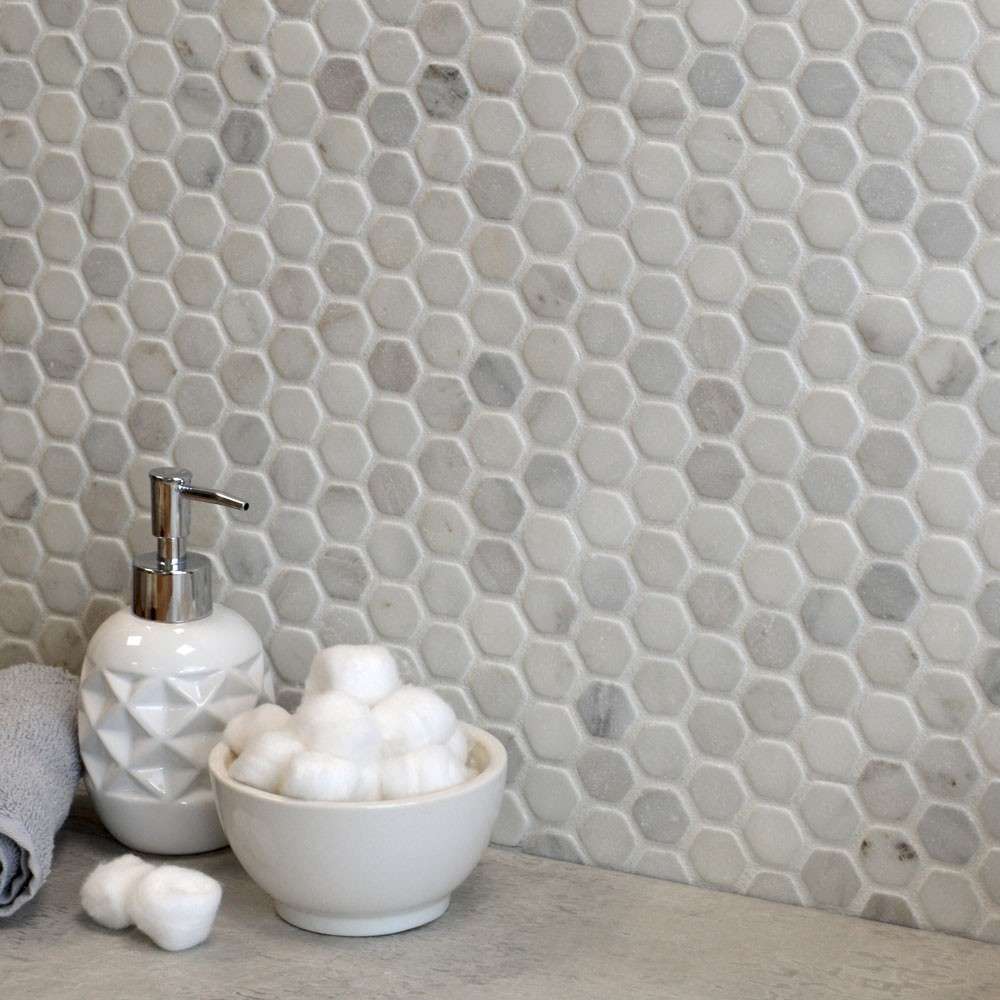Thinking about using natural marble tiles in your project? Here are some things to know beforehand and some bonus marble tile inspiration!
What is marble?
Marble is a form of Limestone that has gone through a process called metamorphosis. This change occurs over thousands of years under the conditions of heat and pressure, naturally occurring from beneath the earth’s surface…
Pure marble is white, however due to the mobility of other minerals and oxides during metamorphosis, a wide variety of colour variation and veining is likely present. This characteristic is what makes marble one of the most beautiful looking and favourite forms of stone for sculptures, architecture and of course, tiling.
ORDER A SAMPLE: NATURAL CARRARA MARBLE TILES
A word on marble tiles and variation
Marble is quarried in huge blocks which are extracted from the mountains face; each of which will contain a variation vein, shade & characteristics. No two blocks will ever be the same. In scale, due to the much smaller size and thickness of a tile compared to the piece it was cut from, this means the variation gradient from tile to tile and batch to batch will never be uniform, therefore before fixing the tiles, they should be dry laid to work out a suitable blend.
If you ever look more closely at any marble lobby or bathroom you will see the variation from tile to tile. It’ll be working harmoniously together, creating a unique space. This is the real beauty of natural stone.

Above is an example slab of how the marble would be initially cut. The bathroom section that shows the tiles that could be cut from this slab and how it would look once the variations would be mixed if the tiles came on a single delivery. (Tiles supplied are pre-selected to approved parameters for variation).
Highlighted are four examples of where the vein from the slab can be found in the finished tiled project.
You will also notice the extreme shade variation. Some tiles are very light with minimal veining, against darker tiles where the vein and shade is more dominant, highlighting one of the main characteristics of marble tiles. No two Marble tiles will be exactly the same.
Different types of marble tiles
As well as the more common white Carrara Marble with grey veining, here are some examples of other marble variations that are available from Walls and Floors:

Fissures
Many people who choose marble for a tiling project may see the odd hairline crack either before or after fixing and assume it is a defective tile. However, with the nature of the tiles’ structure and veining, marble can be prone to naturally occurring fissures. These are not defects but can be visible in the polished surface. Most of the time, these fissures generally have no bearing on the integrity of the stone and will not grow or widen over time.
Small fissures can be left as they are but larger fissures can be filled with a colour matching or translucent epoxy resin, or tile adhesive if it’s on the back of the tile. It should be understood that the fissures are not faults; they are a natural occurrence and therefore are to be expected and appreciated as one of the characteristics of Marble tiles.
Notes about fixing and maintenance
If putting a natural marble on a wall, you need to ensure the substrate is capable of holding the weight. Marble weighs approximately 25-30kg per m2 making it heavier than most standard ceramic tiles. If you are unsure, a suitable tile backer board such as Hardie Backer should be installed first.
Marble is suitable for use on most floors. They can be tiled directly onto screeds or correctly installed timber floors, but it is highly recommended to use an anti-fracture matting if tiling onto underfloor heating, or areas that may be subject to lateral movement.
Marble is a semi-translucent stone and naturally porous. Rapid setting, white, cement based tile adhesive is recommended to limit moisture ingress and to prevent discolouration. Grey adhesive can bleed through the tile and cause permanent staining.
Depending on the size of the tile, a suitable trowel must be used to spread the adhesive, so that a full even coverage is achieved. There should be no voids beneath the marble as this can lead to water marks from condensation and will be a weak spot, susceptible to damage under heavy weight loads and impact.

As well as spreading the adhesive on the substrate, a skim of adhesive should also be applied to the back of the tile to aid coverage and to fill in any natural fissures found in the tile. This will increase the structural strength of the tile once fitted.
Marble tiles require sealing both before and after grouting to prevent them from being porous and staining. Sealing before grouting will prevent discolouration from grout residue and a further coat after grouting will ensure future protection from staining. We recommend the LTP MPG sealer for polished marble, and the LTP Mattstone for tumbled non-polished marble. Depending on the amount of usage and applied cleaning regime they should not need a top-up coat of sealer for 3-4 years, but should be checked regularly to ensure it remains effective.
Marble contains Calcium Carbonate which can be prone to acid etching. Standard Silicone sealants must not be used as they create Acetic Acid during the curing process which can affect the marble. Instead, a Low Modular Silicone such as Mapei Mapesil LM should be used for sealing gaps and perimeter joints.
Marble tiles and sealers alike can be affected by acidic spillages and cleaning products. The sealer will repel acidic substances for a short time, but once broken down, the marble will start to be affected. Spillages should be wiped from the surface immediately to prevent staining and etching issues. PH neutral cleaners such as the LTP Waxwash should be used regularly to both clean and maintain the marble and sealer.
There you have it – an introduction to natural marble. Browse our selection of natural marble tiles and create the natural look in your home this season. If natural marble doesn’t quite complement your budget, check out our range of marble effect tiles, for something that is sure to meet your purse halfway!
We hope you found this guide to marble tiles helpful. If you have any more questions, don’t hesitate to get in touch with our friendly team! Be sure to tag us in pictures of your design on Instagram, @Wallsandfloors, we love seeing our products in your home!





